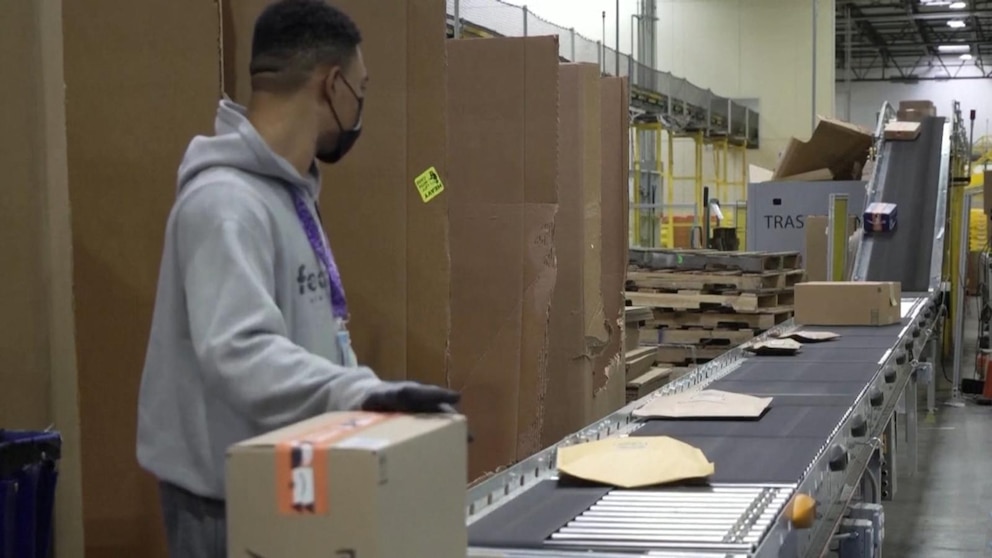Will Restored Manufacturing Jobs Solve America's Unemployment?

Table of Contents
The Current State of Manufacturing in America
The decline of American manufacturing over the past few decades has significantly impacted unemployment. Factors such as automation, globalization, and the shift towards service-based economies have led to substantial job losses in the sector. The impact is undeniable: millions of jobs have vanished, leaving entire communities struggling with economic hardship.
- Impact of automation on manufacturing employment: The increasing adoption of robotics and automated systems has reduced the need for manual labor in many manufacturing processes, leading to significant job displacement.
- The role of globalization in shifting manufacturing jobs overseas: The pursuit of lower labor costs and access to larger markets has driven many companies to relocate their manufacturing operations to countries with cheaper labor, resulting in a significant outflow of jobs from the US.
- Statistics illustrating the decline in manufacturing sector employment: Data from the Bureau of Labor Statistics consistently shows a downward trend in manufacturing employment since the peak in the mid-20th century. While specific numbers fluctuate, the overall trend is clear.
The Potential for Restored Manufacturing Jobs
Despite the decline, there's considerable potential for restored manufacturing jobs. Initiatives like reshoring (bringing manufacturing back to the US) and nearshoring (relocating manufacturing to nearby countries) are gaining momentum. Furthermore, emerging sectors like advanced manufacturing and clean energy offer significant job creation opportunities.
- Examples of successful reshoring initiatives: Several companies have successfully brought manufacturing operations back to the US, driven by factors like rising labor costs overseas, automation advancements that reduce labor dependence, and increasing consumer demand for domestically produced goods.
- Growth potential in specific advanced manufacturing sectors: Industries such as aerospace, medical devices, and additive manufacturing (3D printing) are experiencing rapid growth, creating high-skilled jobs.
- Impact of government tax credits and subsidies on manufacturing investment: Government policies, including tax credits and subsidies, are designed to incentivize companies to invest in domestic manufacturing, leading to increased job creation.
Limitations of Relying Solely on Restored Manufacturing Jobs
While the potential for manufacturing job growth is promising, relying solely on this sector to solve America's unemployment problem is unrealistic. The number of manufacturing jobs, even with significant growth, is unlikely to absorb the entire unemployed population. Furthermore, a significant skills gap exists.
- The skills mismatch between available jobs and unemployed workers: Many available manufacturing jobs require specialized skills and training, leaving many unemployed workers without the necessary qualifications.
- The geographically concentrated nature of manufacturing jobs: Manufacturing jobs tend to be concentrated in specific regions, leaving other areas with persistent unemployment challenges.
- The relatively lower number of manufacturing jobs compared to the total unemployed population: Even with substantial growth, the manufacturing sector simply doesn't have the capacity to employ the millions of Americans currently unemployed.
A Multifaceted Approach to Unemployment Reduction
Addressing America's unemployment requires a far broader strategy than solely focusing on restoring manufacturing jobs. A multifaceted approach is crucial, encompassing several key areas:
- Growth sectors offering significant employment opportunities: The technology sector, healthcare, and renewable energy are all experiencing rapid growth and offer substantial employment potential.
- The importance of investing in education and skills development programs: Bridging the skills gap is essential through investments in education, vocational training, and apprenticeship programs.
- The role of infrastructure development in creating jobs across various sectors: Investing in infrastructure projects, such as transportation, energy, and communication networks, generates jobs across multiple sectors and boosts economic growth.
Conclusion: Will Restored Manufacturing Jobs Solve America's Unemployment? A Holistic View
While restoring manufacturing jobs is a valuable component of a broader strategy, it's not a panacea for America's unemployment challenges. The limitations of relying solely on this sector are clear. A holistic approach, incorporating diverse sectors, substantial investment in education and training, and robust infrastructure development is essential to significantly reduce unemployment. While the revitalization of the manufacturing sector offers a significant opportunity for job creation and economic growth, understanding the broader context is crucial for creating effective and sustainable solutions. While manufacturing job growth is vital, exploring the diverse avenues for employment and economic revitalization offers a more robust path forward for tackling unemployment and securing the future of American jobs. Explore further resources to learn more about comprehensive strategies for tackling unemployment and the future of American jobs.

Featured Posts
-
 Analiz Rinku Finposlug Ukrayini Credit Kasa Finako Ukrfinzhitlo Atlana Ta Credit Plus U 2024 Rotsi
May 21, 2025
Analiz Rinku Finposlug Ukrayini Credit Kasa Finako Ukrfinzhitlo Atlana Ta Credit Plus U 2024 Rotsi
May 21, 2025 -
 Wwe Segment With Tony Hinchcliffe Receives Negative Backstage Feedback
May 21, 2025
Wwe Segment With Tony Hinchcliffe Receives Negative Backstage Feedback
May 21, 2025 -
 David Walliams Vs Simon Cowell Britains Got Talents Biggest Rift Yet
May 21, 2025
David Walliams Vs Simon Cowell Britains Got Talents Biggest Rift Yet
May 21, 2025 -
 Le Theatre Tivoli De Clisson En Images Apres Sa Selection Au Loto Du Patrimoine 2025
May 21, 2025
Le Theatre Tivoli De Clisson En Images Apres Sa Selection Au Loto Du Patrimoine 2025
May 21, 2025 -
 Antiques Roadshow National Treasure Unearthed Leading To Trafficking Arrests
May 21, 2025
Antiques Roadshow National Treasure Unearthed Leading To Trafficking Arrests
May 21, 2025
